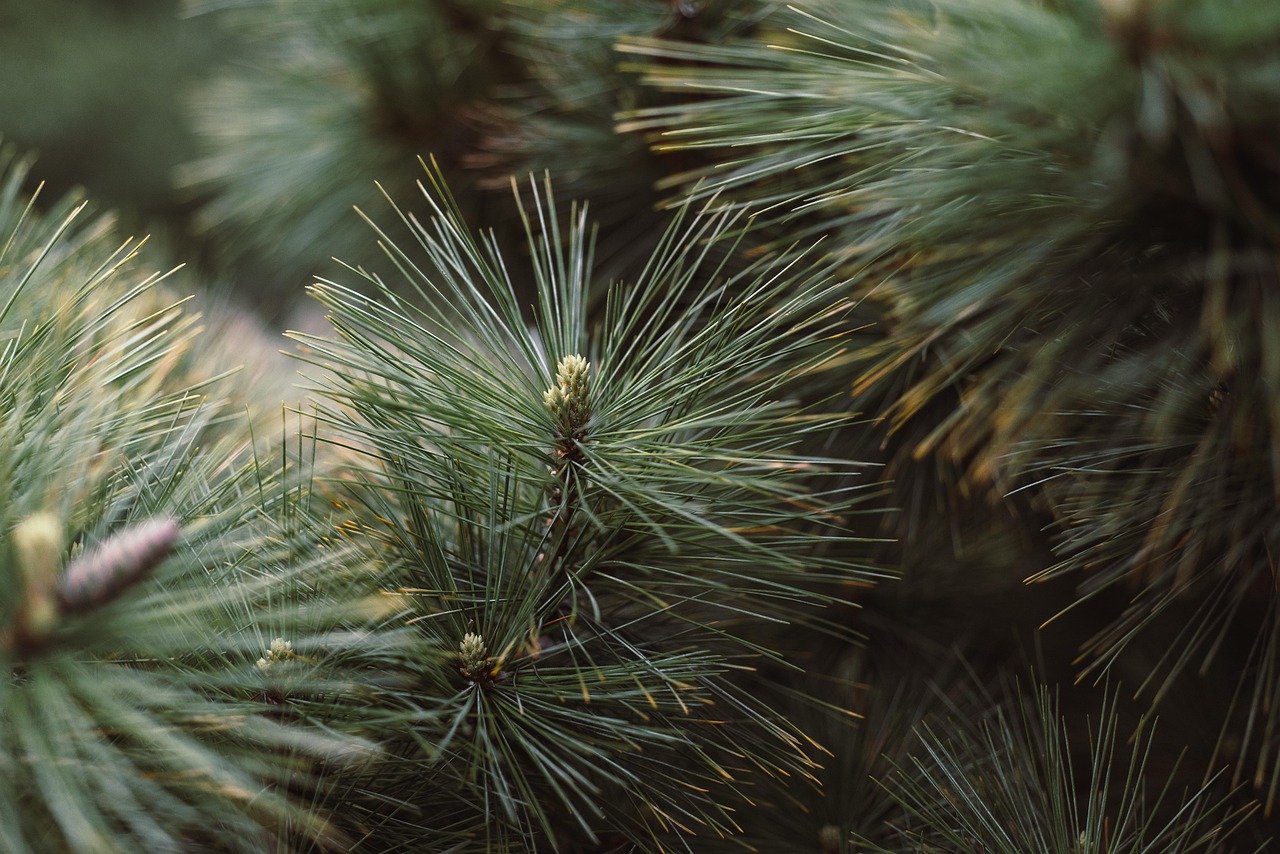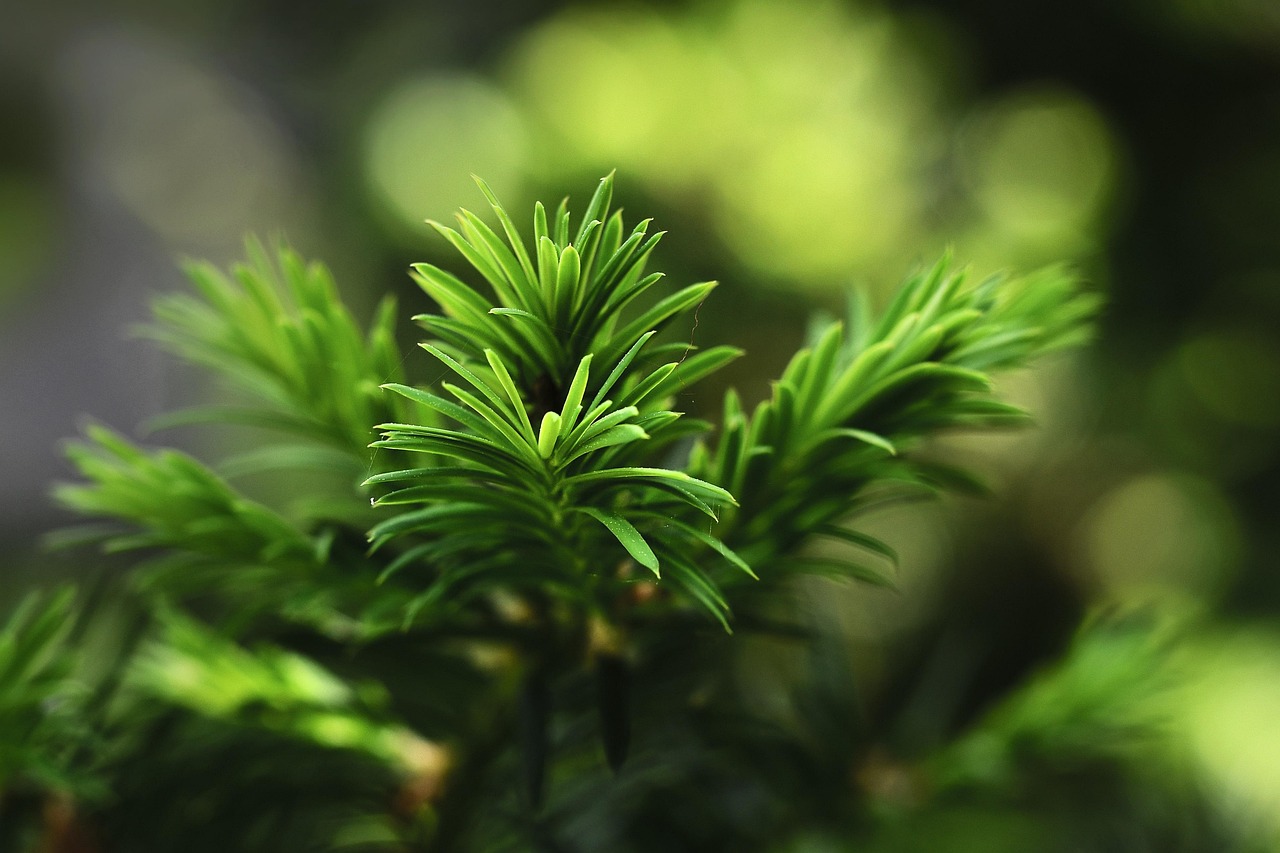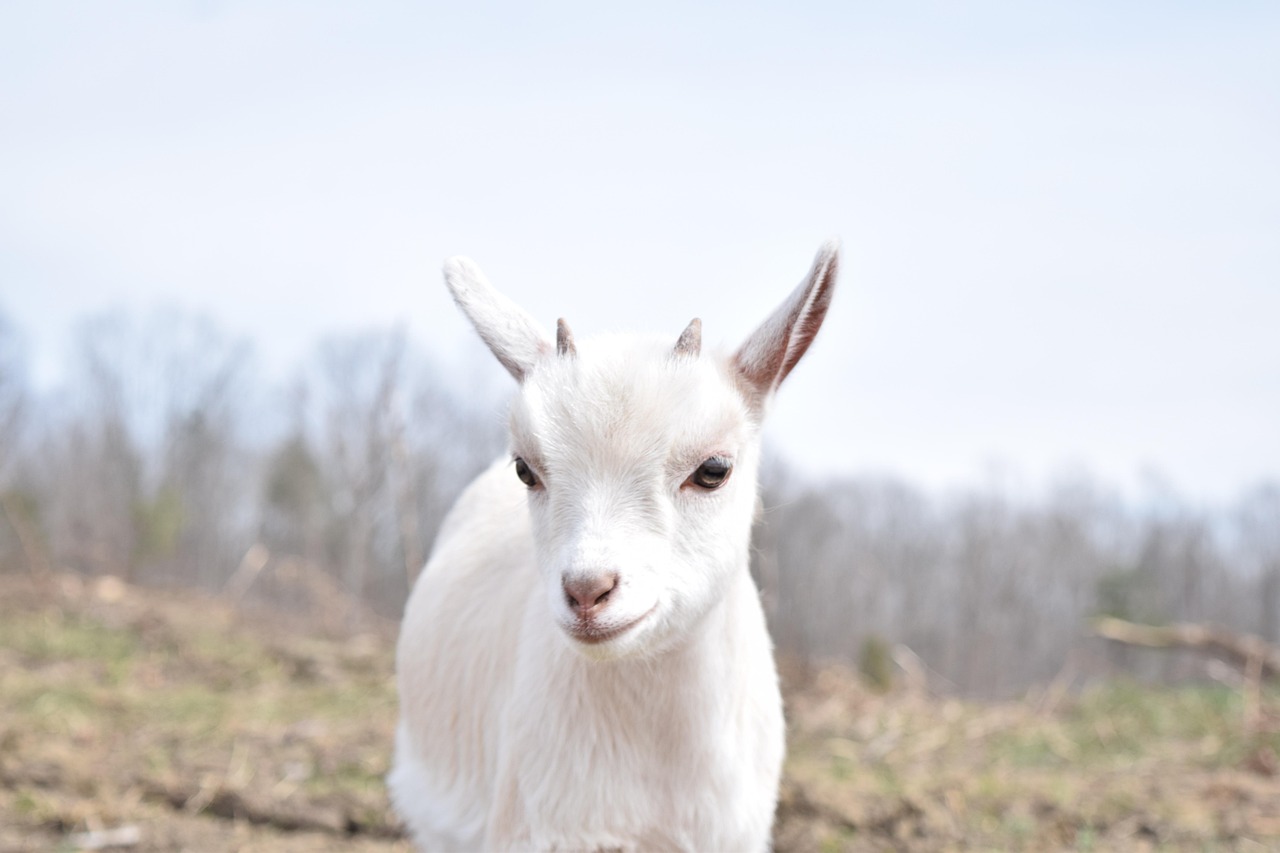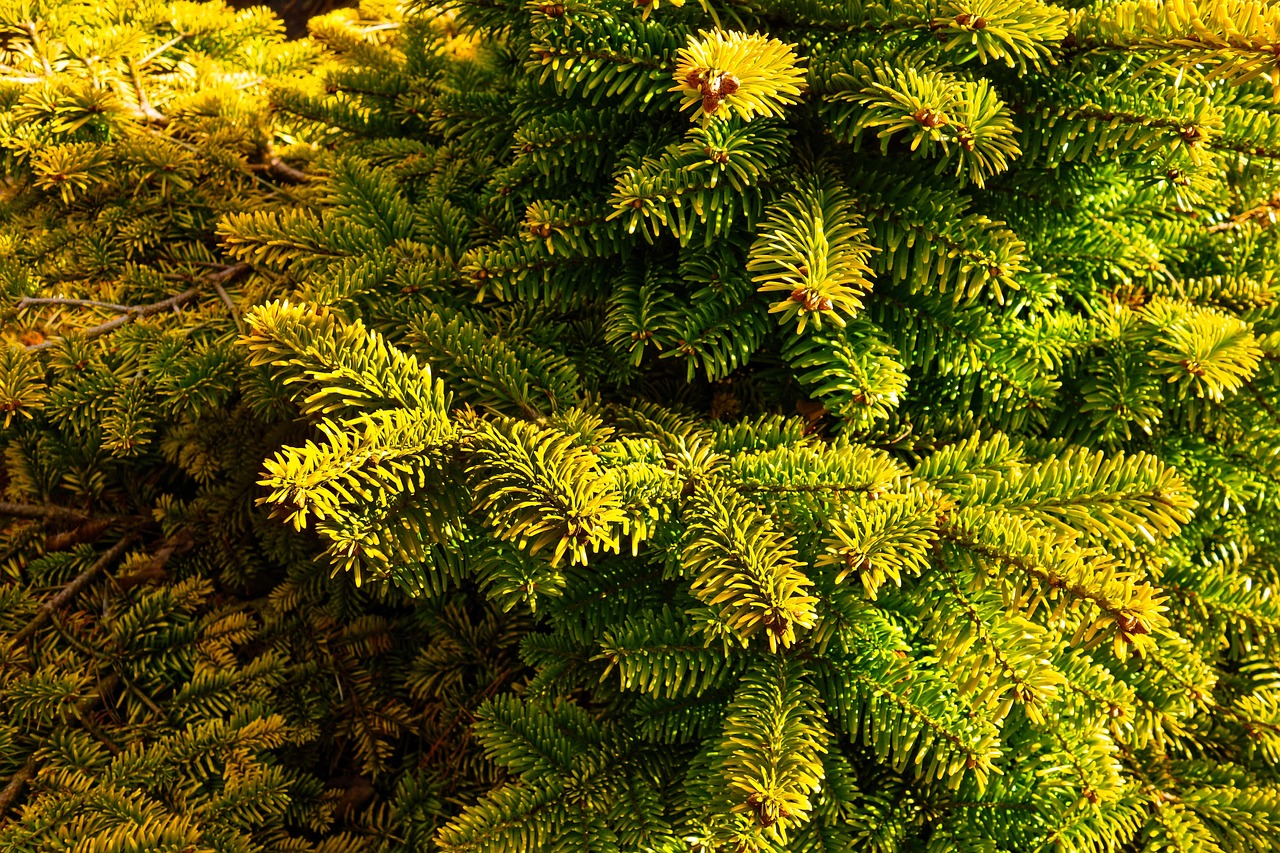Dwarf conifers are enchanting plants that combine the resilience of traditional evergreens with a compact size, making them perfect for gardens of all shapes and sizes. With their unique forms and vibrant foliage, these tiny titans bring a touch of personality to any landscape. They invite creativity in garden design and can transform even the smallest spaces into stunning displays of nature.
These miniature conifers come in a variety of species and cultivars, each with its distinct characteristics. Whether you are looking for a dramatic focal point or subtle greenery to complement larger plants, dwarf conifers provide endless possibilities. Their adaptability allows them to thrive in various climates, making them a favorite among gardeners and landscapers alike.

One of the defining features of dwarf conifers is their slow growth rate, which makes them ideal for smaller gardens. Unlike their larger counterparts, these plants require less maintenance and can be easily incorporated into existing landscapes. Their evergreen nature ensures that they provide year-round interest, enhancing your garden’s aesthetic even in the colder months.
Characteristics of Dwarf Conifers
Dwarf conifers possess several key characteristics that set them apart from standard conifers. Understanding these traits can help you select the right varieties for your garden.
- Size: Dwarf conifers typically reach heights of 2 to 10 feet at maturity, making them manageable for home gardens.
- Growth Rate: These plants grow slowly, often adding only a few inches each year. This slow growth allows for easy placement and planning in your landscape.
- Variety: There are numerous species and cultivars available, each offering unique colors, shapes, and textures.
- Hardiness: Many dwarf conifers are hardy in a range of USDA zones, making them suitable for diverse climates.
- Maintenance: Low maintenance requirements mean they do not need frequent pruning or care.
Another appealing aspect of dwarf conifers is their versatility. They can be used in various garden styles, including rock gardens, formal landscapes, and even container gardens. Their ability to adapt to different environments also makes them suitable for urban settings where space is limited.
The diversity within dwarf conifers can be appreciated through a closer look at some popular varieties. Below is a table featuring a few commonly grown dwarf conifers, showcasing their characteristics.
| Common Name | Scientific Name | Height | Width | USDA Zone |
|---|---|---|---|---|
| Mugo Pine | Pinus mugo | 3-5 ft | 4-6 ft | 3-7 |
| Dwarf Alberta Spruce | Picea glauca ‘Conica’ | 4-10 ft | 3-4 ft | 2-8 |
| Balls of Fire Juniper | Juniperus chinensis ‘Keteleeri’ | 2-3 ft | 2-3 ft | 4-9 |
| Blue Star Juniper | Juniperus squamata ‘Blue Star’ | 1-2 ft | 2-3 ft | 4-9 |
Their enchanting forms and colors make dwarf conifers perfect for creating visual interest in any garden setting. Whether used as ground cover or as accents in a mixed border, these plants are sure to delight both novice gardeners and seasoned horticulturists alike.
Furthermore, dwarf conifers offer an eco-friendly option for landscaping. They provide food and shelter for local wildlife, contributing positively to biodiversity. As gardeners become more aware of sustainable practices, incorporating native dwarf conifers into landscapes can be an effective way to enhance local ecosystems while beautifying outdoor spaces.
In summary, dwarf conifers are not only visually appealing but also functional and versatile plants that can enhance your garden’s aesthetics while being easy to maintain. Their ability to thrive in various conditions makes them an excellent choice for any gardener looking to make a statement with small spaces.
Choosing the Right Dwarf Conifer for Your Garden
Selecting the perfect dwarf conifer for your landscape involves considering several factors. This ensures that the plant not only thrives but also complements the overall design of your garden. Here are some essential aspects to keep in mind when choosing a dwarf conifer:
- Climate: Understand your local climate and choose conifers that are suitable for your USDA hardiness zone. Each species has specific temperature tolerances.
- Soil Type: Dwarf conifers generally prefer well-drained soil. Test your soil’s pH and composition to find varieties that will flourish in your garden.
- Sun Exposure: Consider how much sunlight your garden receives throughout the day. Some dwarf conifers thrive in full sun, while others prefer partial shade.
- Space Requirements: Assess the space available. Dwarf conifers may still spread out, so ensure there is enough room for them to grow without overcrowding.
- Aesthetic Preferences: Think about the colors, textures, and shapes you want to incorporate into your garden. Dwarf conifers come in a stunning array of options.
Popular Varieties of Dwarf Conifers

With so many dwarf conifers available, it can be overwhelming to choose. Below are some popular varieties, each offering unique traits and benefits:
Mugo Pine (Pinus mugo)
This hardy evergreen is known for its bushy growth habit and dark green needles. Mugo pines are versatile and can thrive in various conditions, making them suitable for rock gardens and borders.
Dwarf Alberta Spruce (Picea glauca ‘Conica’)
This conifer features a classic Christmas tree shape with dense, upright growth. Its lush, bright green foliage turns a stunning golden hue in winter, adding year-round interest to any garden.
Blue Star Juniper (Juniperus squamata ‘Blue Star’)
This compact juniper stands out with its silvery-blue foliage. It is an excellent choice for ground cover or as a low hedge. The color contrasts beautifully with darker plants.
Balls of Fire Juniper (Juniperus chinensis ‘Keteleeri’)
This unique juniper variety emits a fiery hue, particularly in autumn. Its rounded shape creates visual interest and makes it an attractive choice for containers or garden beds.
Planting and Care Guidelines

Successfully growing dwarf conifers requires proper planting and care. Here are some tips to help you establish healthy plants:
- Site Selection: Choose a location with adequate sunlight and well-drained soil.
- Digging the Hole: Dig a hole that is twice as wide as the root ball but no deeper than the ball itself. This helps promote healthy root growth.
- Watering: Water thoroughly after planting to help settle the soil. Continue to water regularly, especially during dry spells.
- Mulching: Apply a layer of organic mulch around the base of the plant to help retain moisture and suppress weeds.
- Fertilizing: Use a balanced fertilizer in early spring to encourage growth during the growing season. Follow package instructions for application rates.
Regular monitoring for pests and diseases is essential for maintaining healthy dwarf conifers. Common issues include aphids, spider mites, and fungal infections. Early detection and treatment can prevent significant damage.
Consider pruning your dwarf conifers to maintain their shape and encourage bushier growth. However, be cautious not to over-prune, as this can stress the plant. A light trim in late winter or early spring is often sufficient.
Dwarf Conifers in Landscape Design
Dwarf conifers can play a crucial role in landscape design due to their versatility and aesthetic appeal. Here are some ways to incorporate them into your garden:

- Focal Points: Use taller varieties as centerpieces in garden beds or near entranceways.
- Borders: Plant low-growing varieties along pathways or as edging for flower beds.
- Rock Gardens: Combine dwarf conifers with stones and alpine plants for a striking natural look.
- Containers: Dwarf conifers thrive in pots, allowing you to create mobile displays that can enhance patios or decks.
Their adaptability and range of colors make dwarf conifers ideal for creating diverse planting schemes. Whether you prefer a formal look or a more relaxed style, these plants can enhance the beauty of any garden setting.
Seasonal Interest with Dwarf Conifers
One of the most appealing aspects of dwarf conifers is their ability to provide year-round interest in the garden. Unlike many flowering plants that have a specific blooming season, dwarf conifers maintain their beauty throughout all four seasons. Here’s how they can enhance your landscape during different times of the year:
Spring
As spring approaches, many dwarf conifers begin to show signs of new growth. The fresh green shoots can add a vibrant pop of color to your garden after the dull winter months. Some varieties may also produce small cones that add an interesting texture.
Summer
During the summer, dwarf conifers serve as a backdrop for flowering plants. Their lush greenery provides an excellent contrast to colorful blooms. Additionally, their dense foliage can help cool surrounding areas, making them a perfect choice near patios or seating areas.
Autumn
In autumn, certain dwarf conifers exhibit stunning color changes. Some may turn shades of gold or bronze, providing a warm glow to the landscape. Others retain their deep greens, which stand out beautifully against the fall foliage of deciduous trees.
Winter
The evergreen nature of dwarf conifers makes them particularly valuable in winter. They provide structure and form when many other plants have lost their leaves. Snow on the branches creates a picturesque scene, enhancing the winter landscape.
Creating Texture and Depth
Dwarf conifers also play a significant role in adding texture and depth to garden designs. Their unique foliage characteristics can create a visually appealing contrast with other plants. Here are a few ways to use texture effectively:
- Mixing Foliage Colors: Combine different shades of green, blue, and gold among your conifers to create a layered effect.
- Varying Shapes: Incorporate conifers with distinct shapes—such as globular, pyramidal, or cascading forms—to add visual interest.
- Height Variation: Use taller dwarf varieties as backdrops while placing shorter ones at the forefront to create depth in your planting beds.
- Textural Contrast: Pair dwarf conifers with broadleaf evergreens or flowering perennials for dynamic contrasts in texture.
Caring for Dwarf Conifers in Different Climates
Understanding how to care for dwarf conifers based on your local climate is crucial for their success. Here are some tips tailored for different environments:
Cold Climates
In regions with harsh winters, choose hardy varieties that can withstand freezing temperatures. Ensure proper drainage to prevent root rot, and consider applying mulch to protect roots from freezing.
Hot Climates
Dwarf conifers in hot climates require attention to watering and soil moisture. Select drought-tolerant species and ensure they receive adequate hydration during dry spells. Providing afternoon shade can also help protect them from extreme heat.
Humid Climates
In humid regions, be cautious of fungal diseases that may affect conifers. Proper air circulation is vital; avoid overcrowding plants and consider planting in raised beds if drainage is an issue.
Common Pests and Diseases
Dwarf conifers can be susceptible to various pests and diseases. Being aware of these issues can help you take preventative measures:
- Aphids: These small insects can cause leaf distortion. Regularly inspect your plants and apply insecticidal soap if necessary.
- Spider Mites: Look for fine webbing on foliage as a sign of infestation. Increase humidity around the plants and use horticultural oil for treatment.
- Fungal Infections: Ensure good airflow and avoid overhead watering to prevent diseases like needle blight or root rot.
- Scale Insects: These pests can be hard to spot but may cause yellowing leaves. Use neem oil or insecticidal soap for control.
Regular monitoring and prompt action are essential to keeping your dwarf conifers healthy and thriving. By understanding their needs and potential challenges, you can enjoy these unique plants in your garden for years to come.
Designing with Dwarf Conifers
When incorporating dwarf conifers into your landscape, thoughtful design can amplify their unique characteristics and create a harmonious garden space. Here are some design strategies that can elevate the visual appeal of your outdoor areas:
Layering Heights
Utilizing varying heights of dwarf conifers allows for a more dynamic landscape. Taller varieties can serve as backdrops, while shorter ones can fill in the front. This layering creates a sense of depth and dimension, drawing the eye through the garden.
Seasonal Color Schemes
By selecting dwarf conifers with different foliage colors, you can create stunning seasonal color schemes. For instance, pairing blue-hued conifers with gold or green varieties can provide a vibrant contrast that changes throughout the seasons.
Contrast with Broadleaf Plants
Dwarf conifers can be effectively paired with broadleaf evergreens or flowering plants. The contrast between the needle-like foliage of conifers and the broad leaves of other plants enhances the overall texture and visual interest of the planting area.
Creating Pathways and Borders
Using dwarf conifers to define pathways or borders can add structure to your garden. Low-growing varieties can create a neat edge along walkways, while slightly taller ones can help guide visitors through the space.
Environmental Benefits of Dwarf Conifers
Dwarf conifers do not just beautify gardens; they also have numerous environmental benefits. Here are some ways they contribute positively to the ecosystem:
- Air Quality Improvement: Like all trees and plants, dwarf conifers help improve air quality by absorbing carbon dioxide and releasing oxygen.
- Wildlife Habitat: These plants provide shelter and food for various birds and small mammals, promoting biodiversity in your garden.
- Soil Erosion Prevention: The root systems of dwarf conifers help stabilize the soil, reducing erosion and enhancing soil health.
- Water Management: Dwarf conifers can assist with water management by absorbing rainwater and reducing runoff.
By incorporating these plants into your landscape, you are contributing to a healthier environment while adding beauty to your surroundings.
Final Thoughts
Dwarf conifers are more than just tiny evergreens; they are versatile, low-maintenance plants that bring immense personality and charm to any garden setting. Their adaptability allows them to thrive in various climates, making them suitable for virtually any landscape design. With their year-round interest, unique textures, and stunning colors, they can enhance visual appeal while providing essential ecological benefits.
As you explore the possibilities of dwarf conifers, consider their role in creating balanced and engaging garden spaces. Whether integrated into formal designs or used in more relaxed settings, these plants offer endless opportunities for creativity. From careful selection to thoughtful placement and regular care, dwarf conifers can provide joy and satisfaction for gardeners of all skill levels.
In conclusion, dwarf conifers are an excellent choice for anyone looking to make a lasting impact in their garden. Embrace their unique qualities and let them shine in your outdoor space. With proper care and attention, these tiny evergreens will thrive, bringing beauty and life to your surroundings for years to come.
